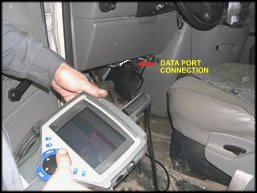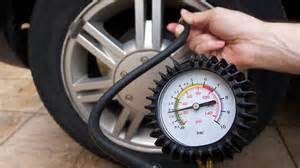Failed your Smog Check? Let us help you understand why and how to pass the next smog test. If the check engine light is on, you fail automatically.
Understanding Emissions Testing - ECheck
O2 Sensor failure is the #1 reason for emissions failure. A failed sensor will achieve poor performance and poor fuel economy.
O2 Sensors
- High Voltage = Rich Condition
- Low Voltage = Lean Condition
- Range = 100 - 900 mV
- Pre-Catalytic Converter Sensor(upstream O2 Sensor) = Fuel Control or A/F ratio(Air/Fuel)
- ECM sends out a 450 mV reference signal. If the signal is higher by 1.2 mV = a bad ECM
- Post Catalytic Converter Sensor(downstream O2 Sensor) = Monitors the catalytic converters efficiency
- Bad O2 Sensor = Voltage does not change, Steady voltage - no switching from rich to lean on scan tool reading with engine running

How long do O2 Sensors last?
- Non Heated Sensors - 30,500 miles
- Heated Sensors - between 60,000 and 100,000 miles
- City Driving Decreases the life of the sensor
Replacing the O2 Sensor
- Run engine and heat manifold before removal
- Apply anti-seize to the threads before installing new sensor
Catalytic Converter
Primary Gases
- High CO - indicates a rich condition
- High NOx - indicates engine is overheating and pinging. This can be caused by low octane fuel, failed EGR system and or carbon build up on the pistons
Secondary Gases
- O2 - Exhaust leak will increase readings
- CO2 - Converter has little influence - Should be more than 12% Indicator of system efficiency
- HC - 4 gas
- Converter - Reduces HC, CO emissions using platinum and rhodiom. Rhodiom converts NOx to O & N. Platinum reduces HC.
Federal Law requires all manufacturers to warranty the catalytic converter for 75,000 to 100,000 miles depending on the year of the vehicle. This is separate for the normal warranty. So if you have less than 100,000 miles on the car and are getting code P0420, head back tot he dealer for a free replacement. on older vehicles it was 5 years or 50,000 miles. These days the converter should last at least 100,000 miles.
Smog Check Cheat Sheet to Pass Emissions Test

- Insure your tire pressure is set correctly according to the vehicles manufacturer specifications. The settings are located on a decal inside the drivers side door. Proper inflation of all tires will insure good traction when operated on the test rollers at the smog test center location.
- If the check engine light is on, you will fail. Have any repairs needed taken care of so the check engine light is not on. A steady light indicates an emissions failure. They will test your vehicle, charge you for the test and fail the vehicle.
- Drive your vehicle for at least 20 minutes before going in for your smog check. This will insure the engine is running at proper temperature to allow all system to function properly.
- Change engine oil - this will insure proper compression and ignition of the fuel. The PCV is there for positive crank case ventilation. This allows the engine to breath and allow vapors to escape the oil. Fresh oil will have less contaminants to carry any vapors.
- Go on a day that sunny and dry. This will insure your tires do not slip and give inaccurate readings. Wet tire from rain can cause the tires to slip and create false readings.
- Make sure your engine is running well. If you notice anything other than a smooth running engine such as a misfire, have it taken care of before hand.
Smog Failure Myth
- Burning engine oil will cause the vehicle to fail the echeck emissions test. FALSE! burning engine oil or engine oil smoke will not cause the test to fail.








